Eifelers have been marrying on different days during the week, and there are some historical and spatial patterns to this behaviour. We consider that weeks start on day 1, Monday and end on day 7, Sunday1 .
WEDDAY-1 Preferred wedding day changes over time
Figure WEDDAY-F01 below shows that few people married on Sunday, and throughout the time period considered, the percentage remained low and stable at about 6%. Similar to Sunday, there was little change over time of the number of weddings taking place on Wednesday, Friday and Saturday, with percentages close to 17%, 15% and 15%, respectively.
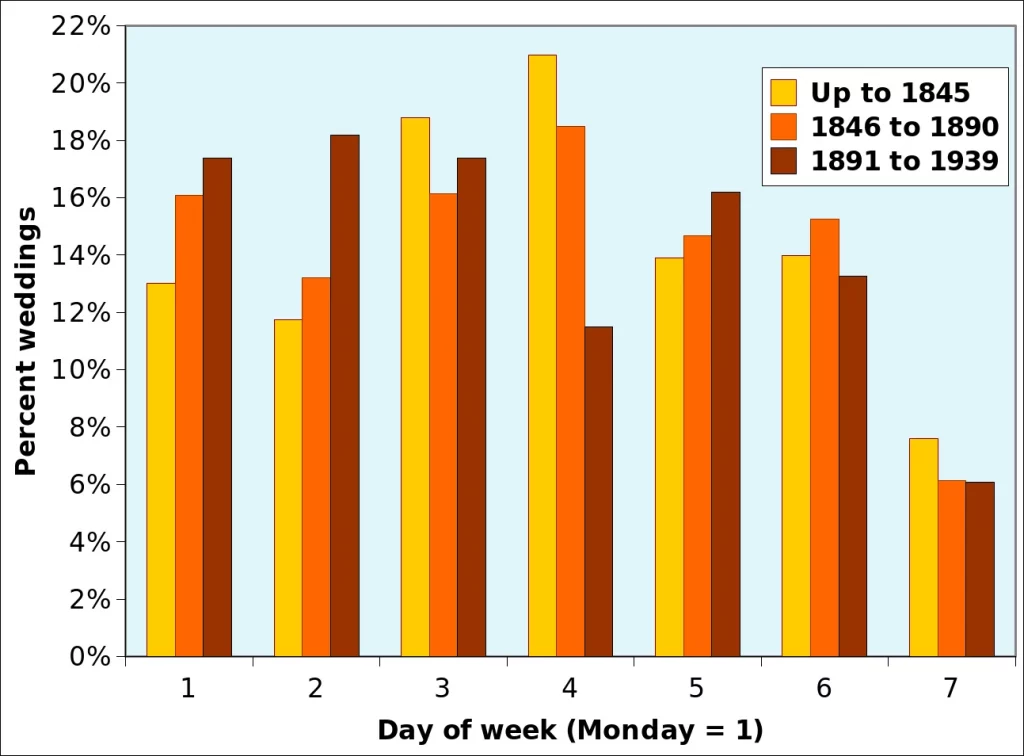
The largest changes have been affecting Monday and Tuesday at the expense of Thursday. The popularity of Monday increased from 13% to 17% between the beginning of the 19th century and the early 20th century, with an even larger increase for Tuesday (below 12 to above 18%). During the same period, Thursday dropped from about 21% to about 11%.
An impressionistic interpretation suggest that a wedding on Thursday disrupts the working week in a rapidly industrialising society. Weddings on Monday and Tuesday make for along week-end with Sunday and allow guests to travel to join the wedding. Of course (see chapters on the relative and absolute origin of spouses, ABSOR and RELOR) most guest did not originate from very far away, but still: Monday and Tuesday ensured a more relaxed approched to the big wedding come-together. It i s also stressed that Saturday remained a working day well into the 20th century2.
WEDDAY-2 Are there Geographic differences in wedding days?
There are very few differences in the wedding day patterns observed above when having a closer look at the clusters of Standesamtbezirke.
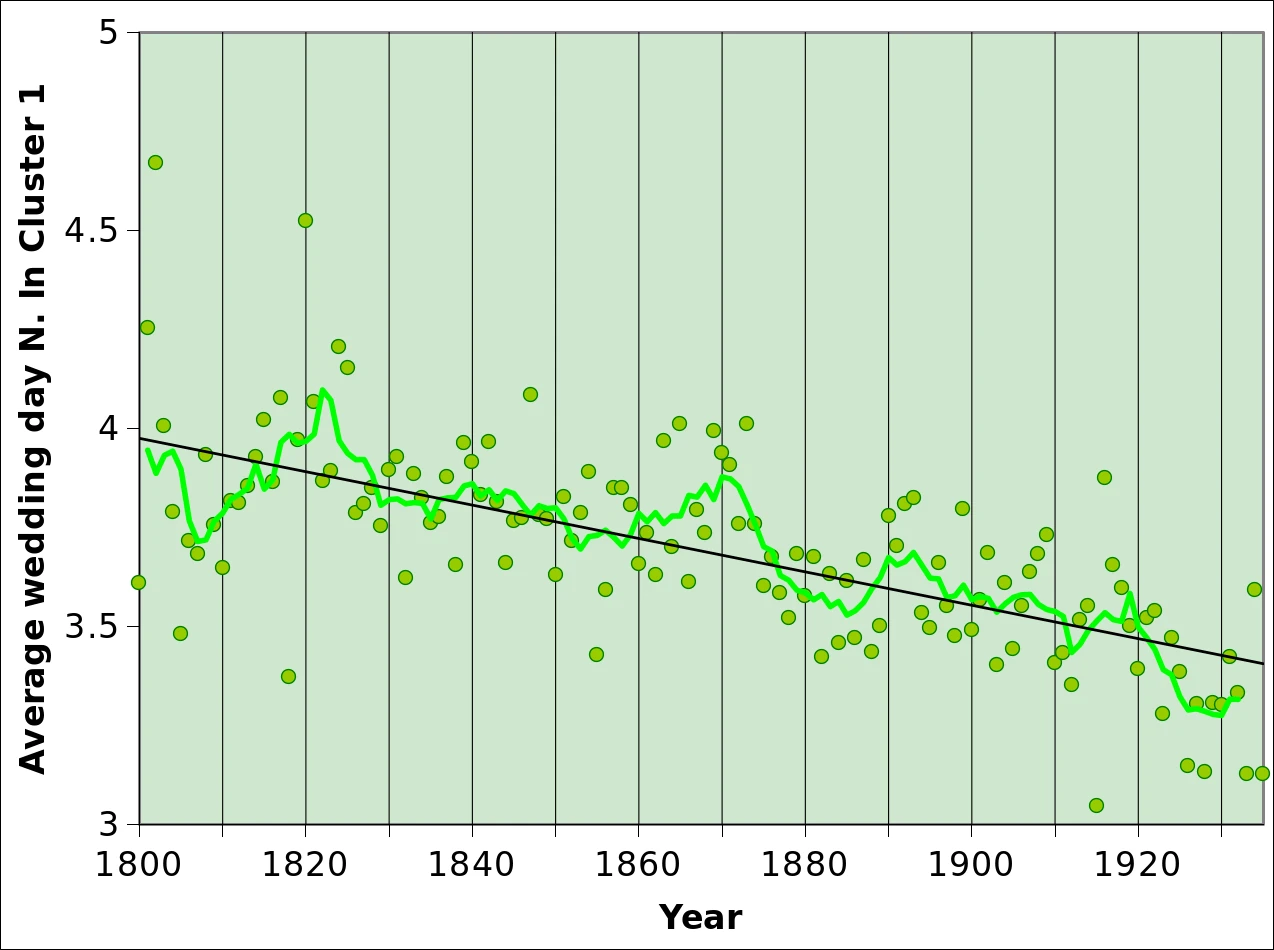 | 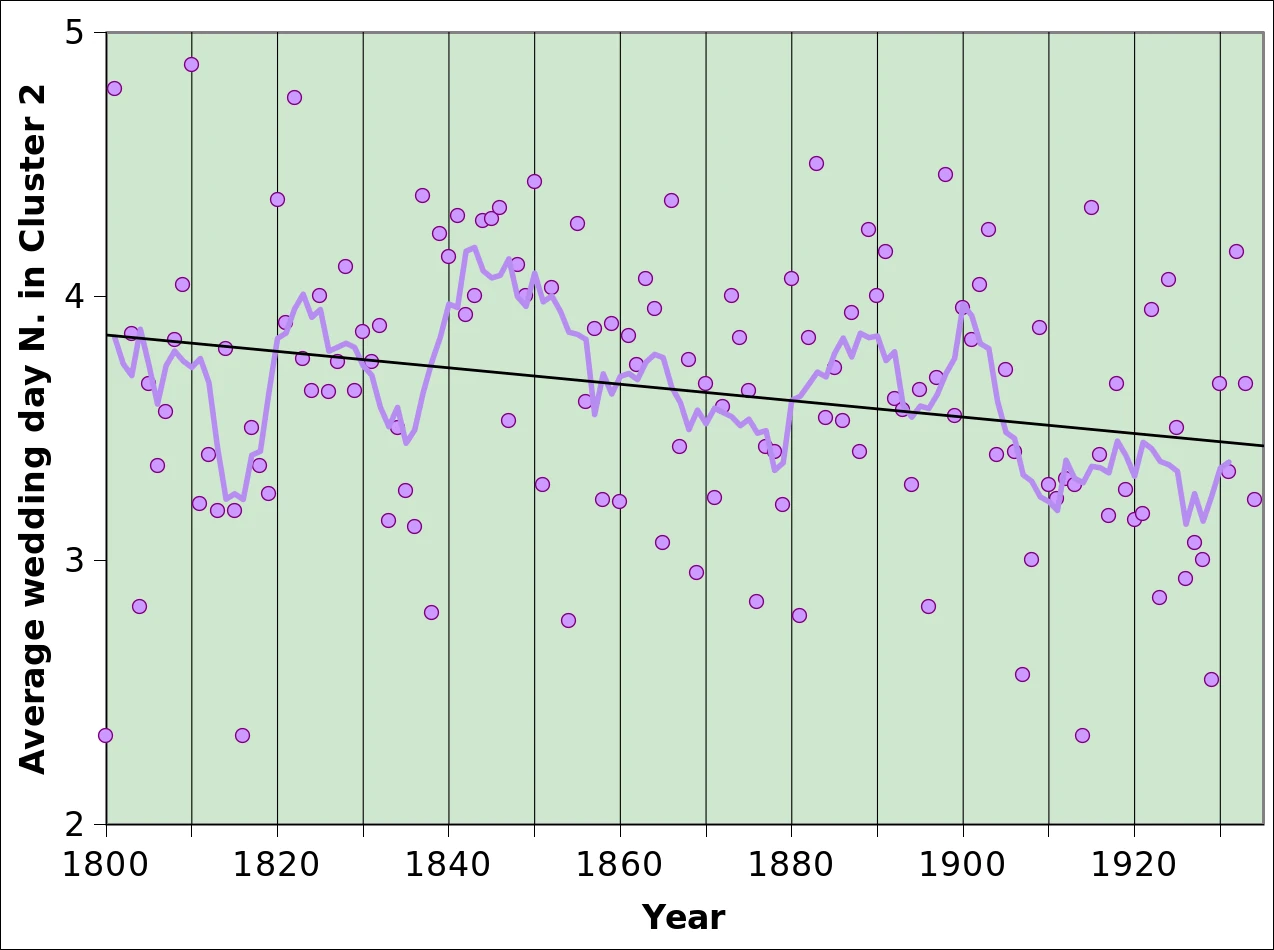 |
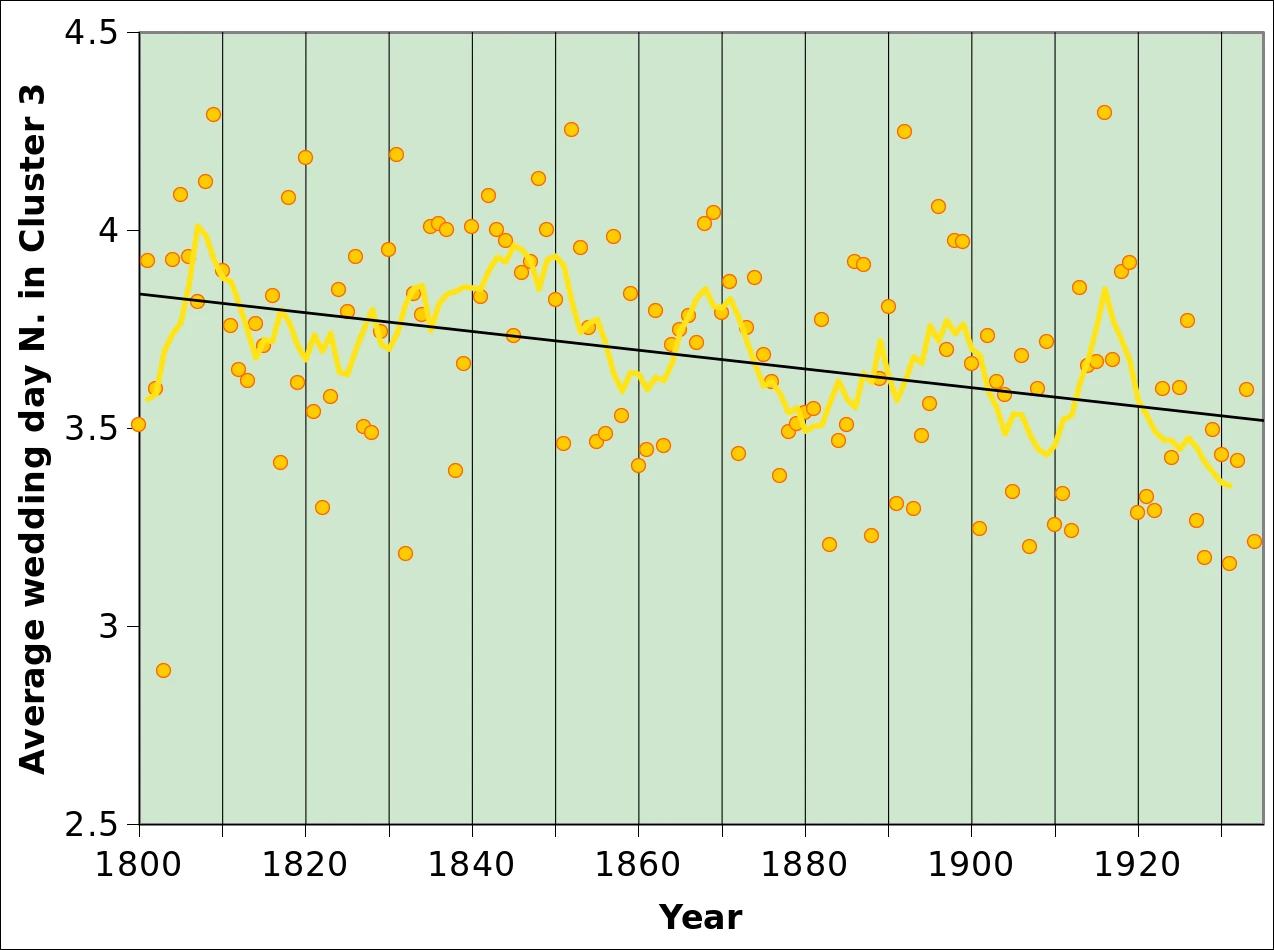 | 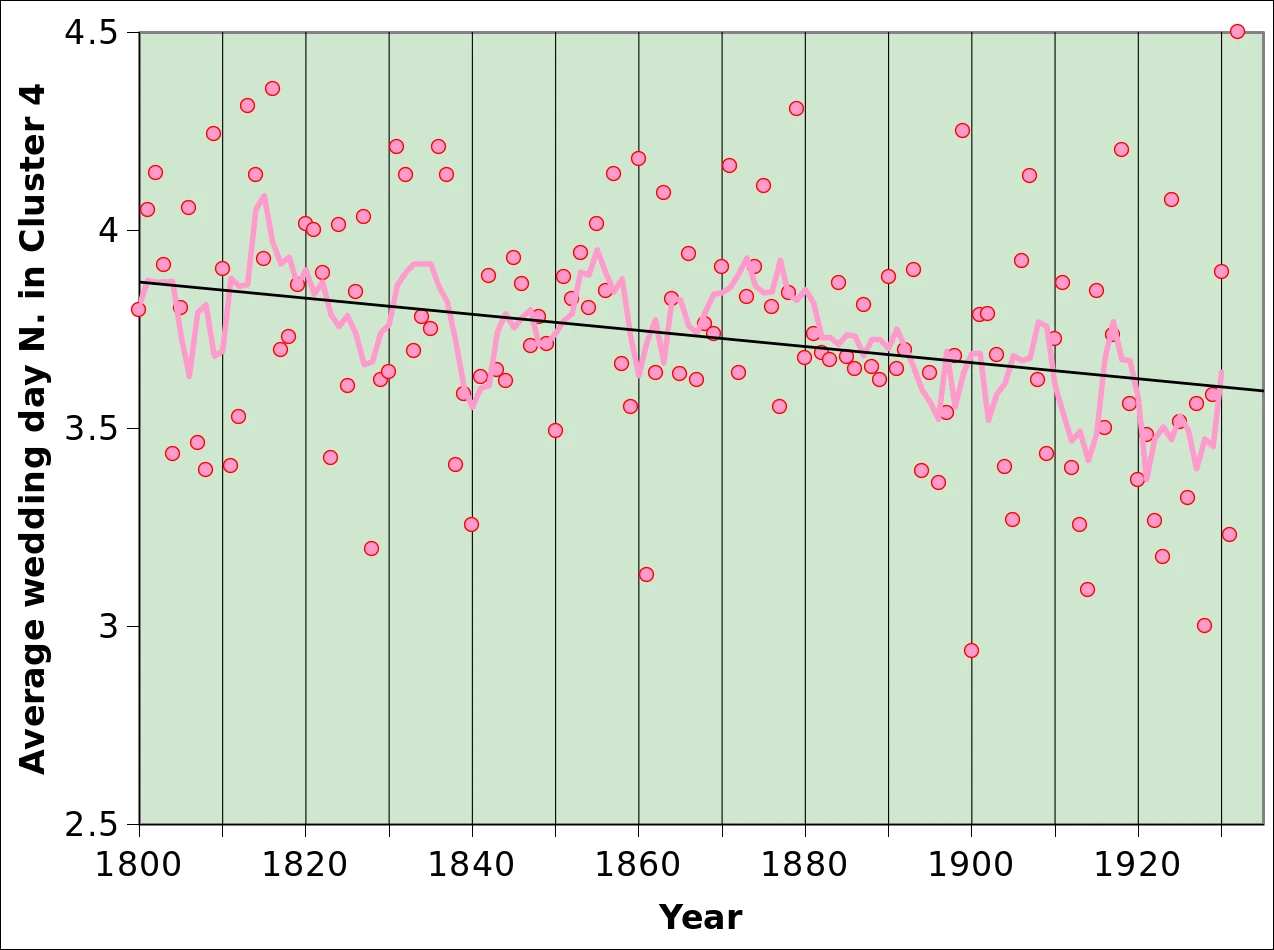 |
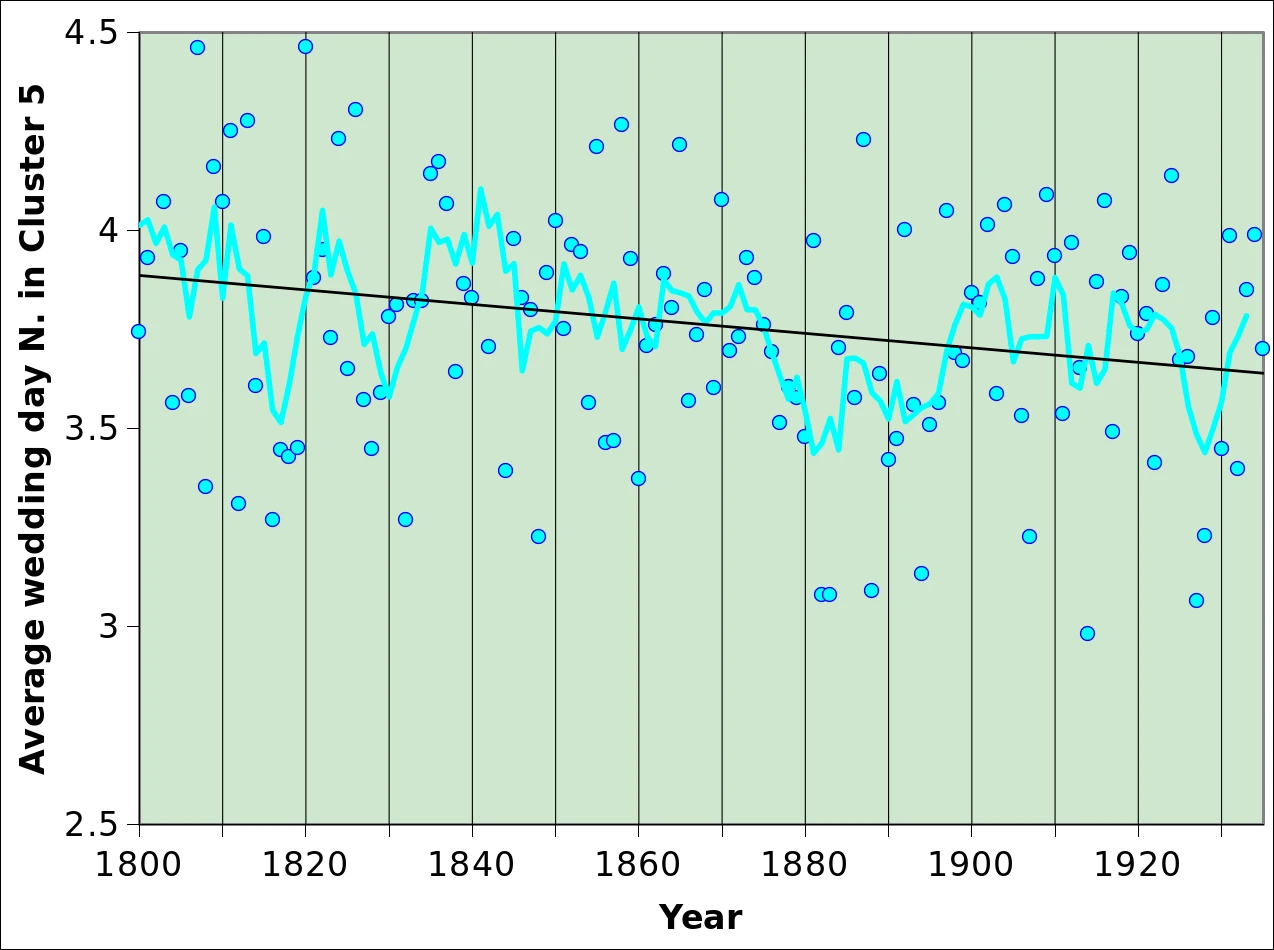 |
All curves start from a value close to 4 (Thursday) and continuously decrease until 1935 with an average close to 3.5, confirming the shift towards earlier weekdays. There is an apparent difference in variability around the moving average and the trend. According to the departures from the trend, the variability of weeding days is largest in cluster 2 (Standard deviation of departures SDD is 0.53 day) and smallest in cluster 1 (SDD=0.19). Remaining clusters (3, 4 and 5) show similar SDD values between 0.27 and 0.31. Cluster 2 corresponds to the two wedding registry offices of Heidweiler and Landscheid, and 1 is the eastern part of the district (Landkreis) Vulkaneifel.